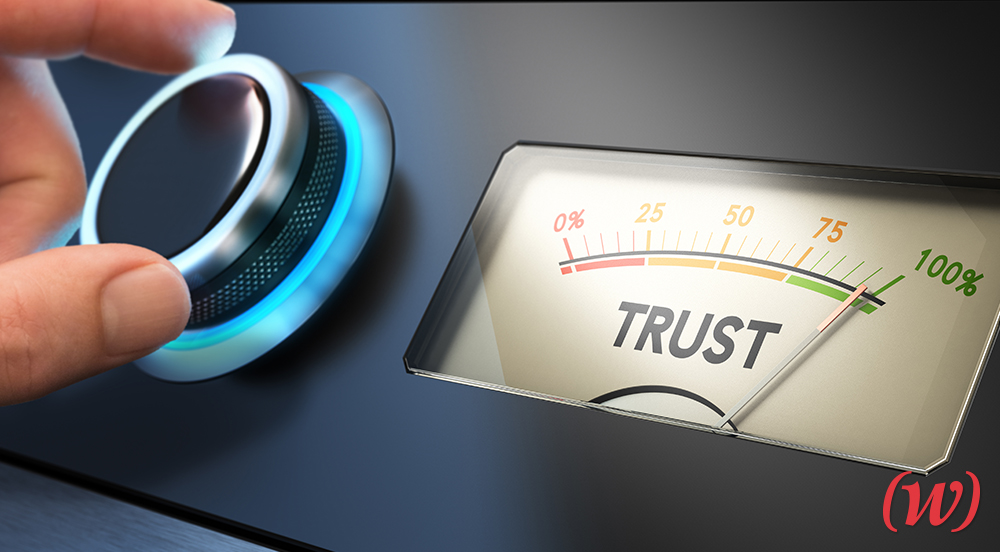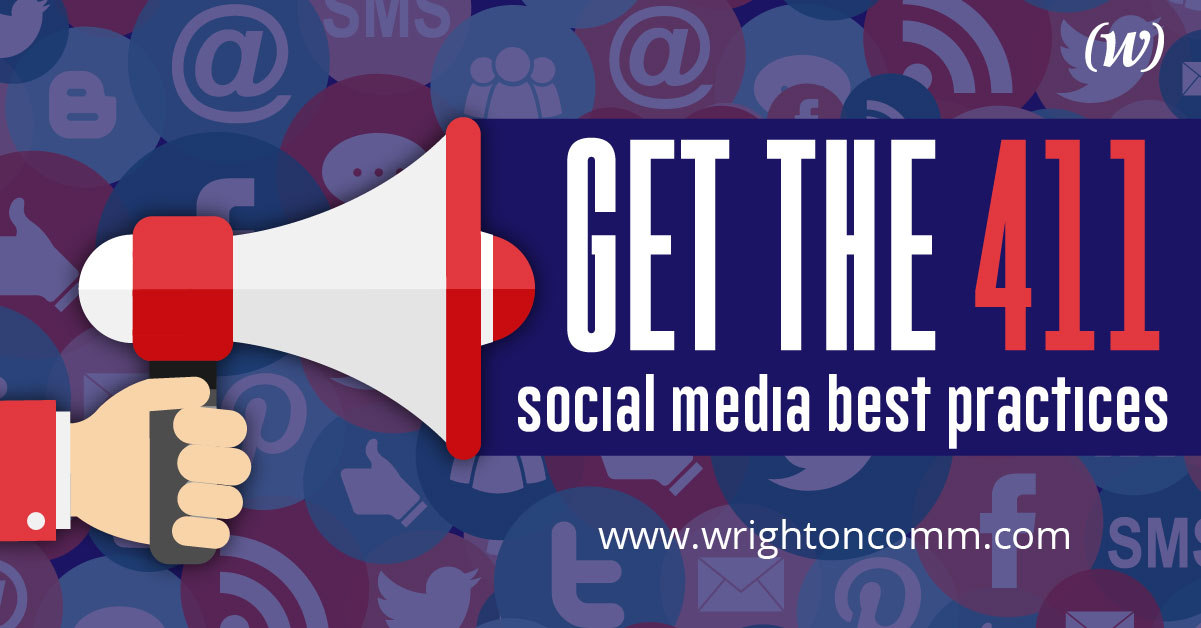Discover how a purposeful rebranding strategy can drive alignment, re-engage stakeholders, and position your organization for growth. Learn key steps, avoid common pitfalls, and explore real-world examples of rebranding done right.
Continue readingPR Best Practices Can Restore Public Trust in the Post-Truth Era
By Julie Wright —President
Twitter: @juliewright
It is not business as usual in the media industry.
Some say we’re in a post-truth era. One thing is for sure: the role and honesty of spokespeople, the press and state-sponsored fake news has us all talking. And, it turns out, this controversy has had an enormous impact on public trust.
Trust levels in the U.S. and around the world are measured by the Edelman Trust Barometer. This annual report provides an in-depth analysis of trust in the U.S. breaking it down by trust in the media, CEOs, businesses, experts, NGOs and more. This year, the Edelman Trust Barometer showed a crisis in trust in America. The deep plunge recorded year over year was akin to a stock market crash.
It found that 63 percent of the U.S. general population struggles to distinguish between what is real news and what is fake. Trust in U.S.-based companies dropped from 55 to 50 percent continuing a decline that began in 2014. Trust in NGOs fell from 58 to 49 percent.
This is the environment in which public relations professionals, their employers and clients are communicating. Information from most sources is greeted with skepticism or outright disbelief by the public.
So, here we are. The scarcest commodity in the U.S. today is trust.
Last week, I interviewed Lynn Walsh, project manager of the Trusting News project to find out how the media is working to restore trust with its readers, viewers and listeners. This week, I’m asking how PR pros can work to restore trust with the public?
The answer is to stick to PR best practices and good media relations fundamentals and to recommit ourselves to the crucial role that public relations best practices play in building and restoring trust.
Let’s Refresh on Media Relations’ Primary Goals
Media relations strategies typically start with two high-level goals in mind.
The first is to raise awareness of a brand’s story and messages with its target audiences through well-placed articles, features and other media mentions.
Since earned media cannot be bought, unlike paid media (advertising), it is more credible—with the public and with Google too. Have you noticed that news articles in major media outlets have a much higher search engine ranking? That’s because the websites that they’re published on have a much higher search engine authority, so Google ranks them higher. (This can cut both ways: it’s awesome when the news in such links is great, and terrible when it’s bad.)
The second goal is to influence perceptions and preserve or build an organization’s reputation.
This starts with ensuring media coverage is accurate and fair. It continues with proactive strategies to communicate a brand’s excellent financial performance, corporate social responsibility program, product innovation or corporate culture.
As brand storytellers, the PR team is approaching these communications as an ongoing process or narrative and not as a one-off event or announcement.
When both of these goals are achieved, the news stories topping your brand’s Google search results are the stories you’re most proud of and not the cringe-worthy ones. Plus, you maintain your organization’s trust with its stakeholders (customers, employees, constituents, vendors, partners, patients, donors—whoever you need to keep onside in order to operate effectively).
In short, PR’s first goal is to get you into the media spotlight and its second goal is to ensure, once you’re there, that you’re lit to show your best side so that your audience applauds, or at least understands, your behaviors and decisions versus throwing tomatoes at you.
Along the way, we apply media relations best practices: knowing what’s newsworthy, building good media relationships and being authentic, timely, accurate and transparent.
Truth and Accuracy are PR Best Practices
We are also ethical. Most PR professionals are members of the Public Relations Society of America. As such, we are expected to uphold the society’s professional code of ethics (PDF). This means that we are advocates for our clients and respect their confidential or privileged information, while also being honest, accurate and truthful in our representations to the public. We take responsibility for the authenticity of the information we represent in our communications and outreach.
It’s not an easy task. Public relations is consistently ranked as one of the top 10 most stressful jobs in America, and it’s not a thankful task to be the media spokesperson when the chips are down or the heat is on. (That’s one big reason why so many of us appreciate our thankful clients and employers so much.)
But, here’s the point of this refresher. Ethical PR that follows PR best practices like transparency, accuracy, authenticity and timely communication is what builds trust.
And trust matters. It has an ROI. There’s even a name for it: brand equity. When brands and people are trusted, they’re valued. When things go wrong, trusted people and brands get the benefit of the doubt. When you look these benefits, an investment in PR best practices makes incredibly good sense.
If this resonates with you as either a PR pro or someone who can influence a company’s PR strategy, I encourage you to fight for PR best practices, to remember that PR is not happy talk and spin. It is also tough talk and the hard work and soul searching that sometimes come when tough conversations are required with your stakeholders.
Remind your colleagues in the C-suite and at the board room table that when they hold strategic communications to the same high standard as you do, the public will hold your brand in higher regard. And when your brand consistently communicates with transparency and truthfulness, you’ll earn the public’s trust. Trusted brands have higher valuations because trust is a precious commodity. So, stand up for standards and stand up for trust.
The 411 on Social Media Best Practices in 2016
By Kara DeMent, Communications Coordinator
With more than two billion active social media users today, having a presence on social media is a must for brands that want to get noticed. With “best practices” and social media platforms evolving and ever-changing, it can be tough navigating the social media landscape to create effective campaigns. If you want to be a savvy social media communicator in 2016, here are five ways you can stay on top of the game.
1. Inspiring Visuals
Use strong visuals that leave a lasting impression. Content paired with a great picture creates 650% more engagement according to recent studies. Recently, WOC helped hospitality client partner, Delaware North, secure the win for Best Use of Visuals from PR Daily – a great example of how creating captivating visuals can help your social media presence stand out.
2. Consistency is Key
Content says everything about your brand. And if you’re not consistent with creating and producing your own content, your brand will feel it. Continuously producing good original content gives you a better chance of being seen by your audience. The more you produce, the more love you’ll receive from your audience – although this depends on what your brands/clients’ needs are, you don’t want to over produce or under produce, so always keep this in mind.
3. Follow the Golden Rule
Whether it’s a fun visual, new product launch or exciting announcement; share, like and comment on content that other brands and influencers of interest to your audience produce. This exposes you to others who in return, may also share your content and help increase your followers and help your engagement. Give and you shall receive.
4. Engage Your Audience
Those of us who are social media pros don’t post content for the fun of it. We post for the opportunity to help our clients raise awareness, drive interest and build relationships. In order to make that opportunity a reality, that means we engage with our target audience by answering questions, commenting, sharing and liking content. The more you engage on social media, the closer you’re to achieving your client’s business goals.
5. Measuring Success
Measuring your social media results only helps you better your social media strategy. It shows you what’s working and what isn’t working. It gives you the leisure to experiment with what works for your brand. If you’re not sure how best to measure your results, the “Big 4” from Buffer is a great guide to follow.
If you’re still stuck on breaking through social media, our team at WOC can get you on the right track. Give us a call or find out more about our capabilities here.
Four Keys to Getting the Most Out of PR
By Chance Shay, Senior Communications Strategist
Over a decade ago, Entrepreneur Magazine explained why every brand needs PR (back then brands were called “companies”) and while explaining that “good PR is the telling of a good story,” referenced The Fall of Advertising and the Rise of PR to illustrate their point. Long gone are the days where CEOs asked if public relations is important to their company. Instead, they’re asking how to make PR the most effective it can possibly be. Every brand in every vertical in every geographic market is different, but these four keys to getting the most out of PR are universally found at the foundation of all great public relations strategies.

Focus on Efficiency
Whether you’re Justin Timberlake, Oprah or an exhausted PR director of a brand producing widgets, you have 24 hours in a day. Making the most out of that time is critical to beating competitors to the story angle punch and seeing your brand’s name in lights instead of on the outside looking in. Be smart about where your time goes.
This could come from instituting efficient work behaviors. Commit to starting the day off right. Schedule time for checking emails instead of responding to them as they hit your inbox. Make a point to prioritize your to-do list.
Another part is making sure you’re using technology to amplify the results while minimizing the time invested. Use tools like Hootsuite, Buffer or Soci to manage social media accounts, optimize content development and publishing, and streamline reporting (see below for why reporting is important). Use Basecamp to alleviate budget-eating project management time.
Remember, don’t bang your head against the wall. If there’s something your team lacks expertise in, outsource it.
Emphasize PR Measurement
To optimize your team’s efficiency, focus on results that provide the biggest bang for your buck. To understand which results are actually moving the needle, you have to measure them.
Without measurement, you won’t know where your resources are best spent. ROI was the buzzword (acronym?) of 2013, but it’s just as relevant today. Think of it this way: is an hour of your time best spent pitching a story or developing an eblast? If the time spent pitching media results in 10 sets of target audience eyeballs seeing your story, but that same time spent on the eblast results in 20 sets of target audience eyeballs seeing and engaging with your story, it’s easy to see where your focus should be.
But not all PR measurement is the same. Make sure you’re gauging outcomes over outputs. For good, strong and valid PR measurement, your team should follow the guidelines set by the International Association for the Measurement and Evaluation of Communications, or AMEC.
PR and Marketing Go Hand in Hand
Do you still think of marketing as driving sales to customers and PR as building a brand’s reputation or trust? You shouldn’t. More so than ever, a brand’s reputation can make or break sales.
But the importance of traditional media is coming back down to earth, too. In fact, scholars and experts were writing about the declining influence of traditional media way back in 2010. With fragmented audiences and the socialization of the Web and its information, a brand doesn’t have to rely solely on traditional media to reach a large, targeted audience.
In 2016, marketing and PR are most effective when they’re done in tandem. Making sure what’s being said about your brand (media) and what you’re saying about your brand (marketing) are consistent is important because future or prospective customers are more informed than ever when they make a purchase decision. If there’s something out of sync with the information they’ve turned up in their research, they’ll see it as a big red flag.
Most importantly, PR and marketing working in tandem amplifies the result. If your PR results are driving the audience to additional brand-created content, then it’s easier to move them down the sales funnel.
Proactivity Over Reactivity
Finally, like a prize fighter, PR is most effective when it’s out in front of opportunities rather than back pedaling and swinging from its heels. Make sure a solid amount of lead time is given to prepare and launch campaigns. This allows you to tee up media wins in advance of the press release or advisory hitting the wire and ensure key influencers are already in the know before a single piece is published.
Being proactive is also important for fostering the strong media relationships. The quickest way to burn a media bridge is to cause a reporter to miss a deadline because you couldn’t provide the information they need fast enough. Anticipate the questions they might have and identify what information your brand is not comfortable releasing. If you’re announcing a development project, anticipate the detailed financial-related questions and have responses pre-approved. Be proactive in providing whatever is necessary to make it easy for a journalist to cover your story.
There is no magic bullet in PR. However, brands can set themselves up to maximize the return on their public relations investment by following these four keys. If you enjoyed this read, make sure you poke around the (W)right On Target Blog for some other pearls of wisdom from the world of PR and marketing. Some of my favorite recent posts include 12 Signs PR Agency Life Isn’t For You, 10 Feelings Anyone Who Works in PR Will Relate To and Reflections to Begin 2016, written by (W)right On’s CEO, Grant Wright.














 Grant Wright
Grant Wright Corie Fiebiger
Corie Fiebiger
 Shae Geary
Shae Geary Phelan Riessen
Phelan Riessen Katrina Early
Katrina Early Hamish Marshall
Hamish Marshall